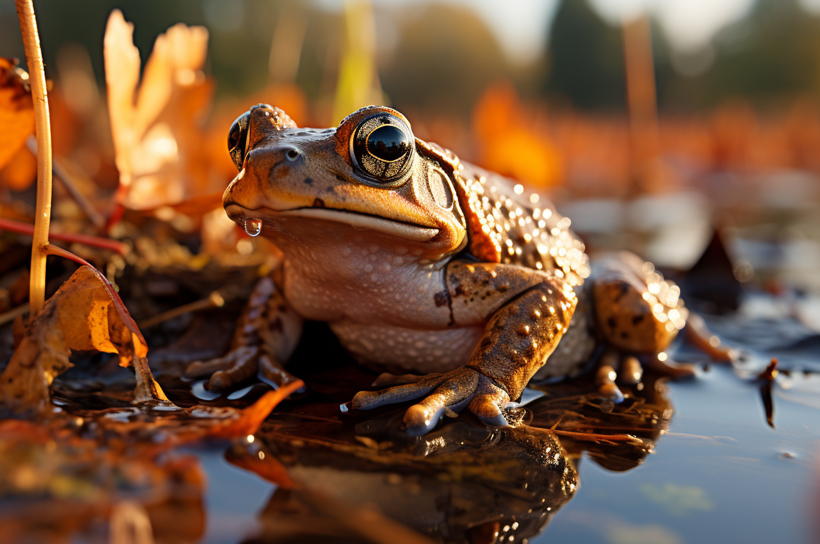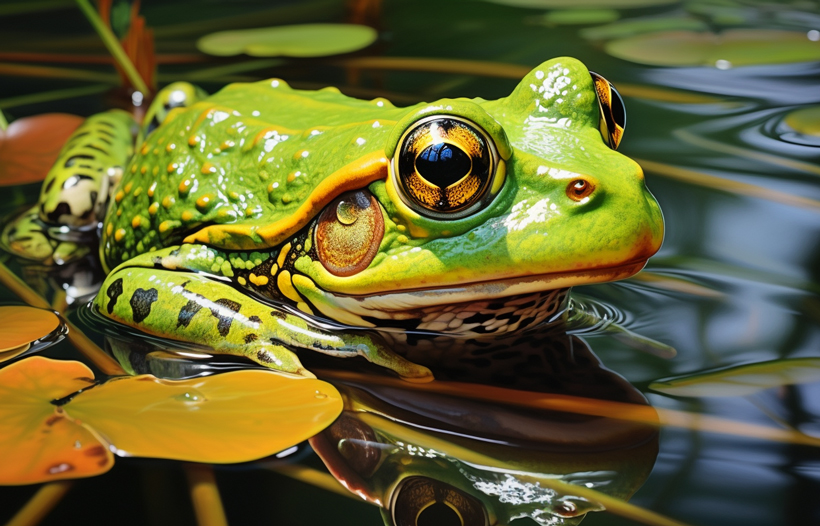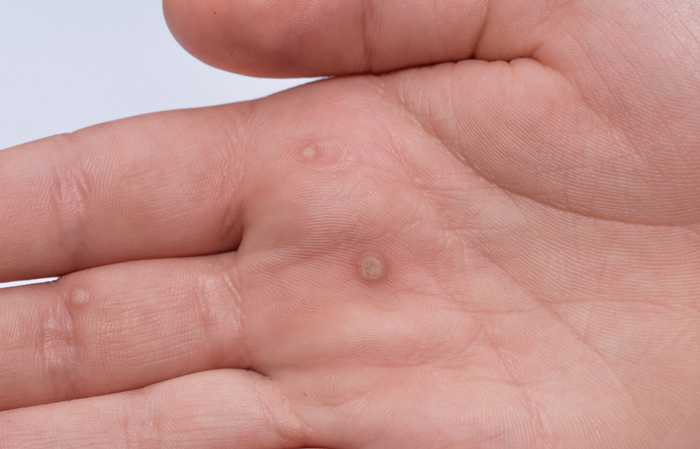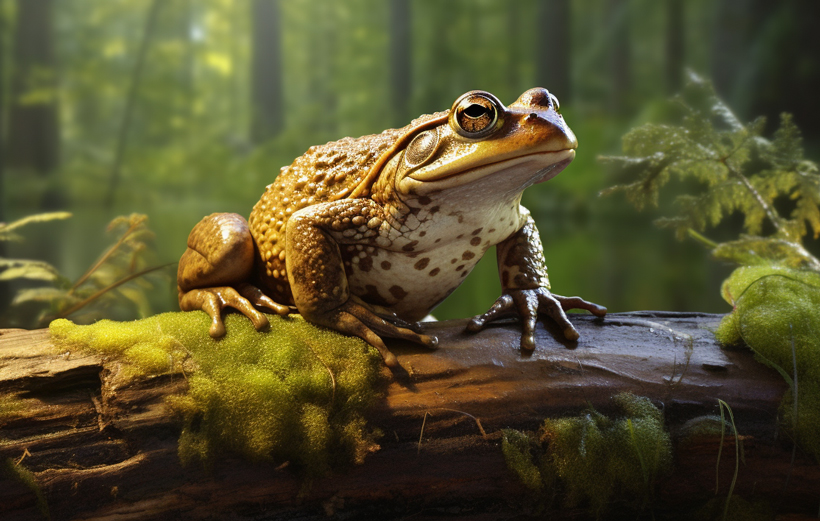Has the old wives’ story of getting warts from handling a frog or a toad ever crossed your mind? It’s not just you if you’ve been thinking this way from childhood. But how true is this persistent urban legend?
So, can you get warts from frogs? Absolutely not. Warts are caused by specific strains of the human papillomavirus (HPV) that affect humans. Frogs and toads cannot transmit this virus or cause warts in humans. The association is simply a widely accepted myth with no scientific backing.
But where did this myth originate? And how can you truly protect yourself from warts? Dive into this guide to uncover these answers and debunk other common misconceptions about our amphibious friends.
Warts: What Are They and How Do They Form?
Warts are common skin growths that many people will encounter at some point in their lives. Despite their frequent occurrence, there’s often confusion about their origins and nature.
Generally, warts are benign skin tumors caused by the human papillomavirus (HPV). There are over 100 strains of HPV, but only a handful are responsible for causing warts on various parts of the body.

The virus invades the outer layer of skin, usually through a small scratch or cut, and causes rapid growth of cells on the outer layer of skin, forming a wart.
The appearance and location of warts can vary based on the type:
- Common Warts: Typically found on fingers, toes, and hands. These warts are characterized by their rough texture, akin to that of a cauliflower, and might have black pinpoints.
- Plantar Warts: Found on the soles of the feet, they grow inward due to the pressure of walking and standing, often causing discomfort.
- Flat Warts: These can appear anywhere on the body but are most common on the face, arms, and thighs. They are smaller, smoother, and tend to grow in large numbers.
- Filiform Warts: Often seen around the mouth, nose, or chin, these are characterized by a thin thread- or finger-like appearance.
- Genital Warts: These affect the genital area and are sexually transmitted.
Warts are contagious, meaning they can spread from one part of the body to another or from person to person. Transmission can occur through direct contact or indirectly, as the virus can survive on surfaces like towels, razors, or even floors in public areas like swimming pools.
It’s worth noting that everyone’s immune system responds differently to HPV, so not everyone exposed to the virus will develop warts. Additionally, the body’s immune system can sometimes clear the virus over time, leading to the natural disappearance of the wart. However, this process might take years, and in some cases, medical intervention could be required for removal.
The Historical Link Between Frogs and Warts
Why are frogs so frequently blamed for these unsightly growths? One reason is the visual similarity between a frog’s bumpy skin and the rough texture of warts. In ancient times, when medical knowledge was based more on observation than scientific evidence, the appearance of a frog might have been linked to warts on the skin.

Another reason could be related to the habitats of frogs. They are often found in damp, murky places, which might have been associated with infections or diseases. Over time, such observations and assumptions likely snowballed into the myth we hear today.
The Science: Can Frogs Give You Warts?
The straightforward answer is no; frogs or toads cannot give you warts. As mentioned, warts are caused by HPV, which affects humans. Frogs carry different microbes, bacteria, and viruses specific to their species and environment. They are not relevant to HPV.

The bumps seen on the skin of frogs and toads are not warts. They are glands that produce substances to help them survive. For example, some frogs produce toxins as a defense mechanism against predators.
It’s worth noting that while these substances might irritate human skin or even be harmful if ingested, they are not related to the HPV virus or warts.
Protecting Yourself from Warts
Warts, while typically benign, can be bothersome, unsightly, and, depending on their location, painful. Caused by the human papillomavirus (HPV), they can show up on any part of the body.
Although they often resolve independently, this process can sometimes take years. It’s far more preferable to prevent warts from forming in the first place. By understanding how warts spread and taking preventive measures, you can significantly decrease your chances of developing them.
Understanding Warts and Their Transmission
Since warts are caused by a virus, they’re contagious. This means they can spread in the following ways.
- Directly, from person to person.
- Indirectly, from coming into contact with surfaces or objects that have been in touch with a wart. Common locations for warts include the fingers, hands, feet, and face. However, genital warts, another form of HPV-induced growth, occur in the genital region and are sexually transmitted.
Effective Strategies for Warding Off Warts

You should follow the following preventative measures to protect yourself from warts.
Regular Handwashing:
One of the simplest yet most effective measures is regular handwashing with soap and water. This practice can reduce the transmission of many infectious agents, including HPV.
Avoid Direct Contact:
If someone you know has a wart, avoid direct skin-to-skin contact with the affected area. This includes not just touching the wart but also avoiding contact with any objects or surfaces the person with warts might have touched.
Keep Your Skin Intact:
Warts can easily infect areas where the skin is broken or damaged. Therefore, refrain from biting your nails or picking at hangnails, as these can provide an entry point for the virus.
Wear Protective Footwear:
Plantar warts, found on the soles of the feet, can be contracted from damp, moist environments like public showers, swimming pools, or locker rooms. Always wear flip-flops or shower shoes in such areas to reduce your risk.
Do Not Touch or Pick at Existing Warts:
If you already have a wart, avoid touching, scratching, or picking at it. This not only prevents spreading the virus to other parts of your body but also to other individuals.
Stay Dry:
HPV tends to thrive in wet, warm environments. Therefore, always dry your hands and feet thoroughly. If you’re prone to sweating, consider using antiperspirant on your feet or wearing moisture-wicking socks.
Strengthen Your Immune System:
While this isn’t a direct protective measure against warts, a strong immune system can help ward off infections, including HPV. To bolster your immune system, maintain a balanced diet, get regular exercise, manage stress, and ensure adequate sleep.
Practice Safe Sex:
Since certain strains of HPV cause genital warts, it’s essential to practice safe sex with your spouse. This includes using condoms, which can reduce the risk of HPV transmission.
Consider Vaccination:
There are vaccines available that protect against certain strains of HPV. While they’re primarily designed to prevent HPV strains from causing cervical cancer, they also offer protection against some strains that cause genital warts. Consult with a healthcare professional to determine if vaccination is right for you.
Other Common Misconceptions About Frogs
Now that we’ve debunked the warts myth, let’s clear up a couple of other misconceptions about frogs:

Frogs vs. Toads:
Often used interchangeably, frogs and toads are distinct. While both belong to the Anura order, they have differences in their skin, legs, and habitats. Notably, it’s often the toad, rather than the frog, that’s linked with the wart myth.
Frogs and Rain:
Another popular belief is that frogs predict rain or come out only when it’s about to rain. While it’s true that frogs are more active in damp conditions, their appearance isn’t a surefire sign that rain is on its way.
Dispelling myths about frogs, such as the misconception around warts, allows us to approach these amphibians with a sense of wonder and respect. As we dive deeper into the world of frogs, it’s fascinating to explore the varied diets across different species. For example, the diet of the glass frog is especially interesting given its unique transparent anatomy. Beyond understanding their dietary habits, observing the life cycle of frogs can be equally captivating. If you’ve ever been curious about the early stages of a frog’s life, our guide on frog egg hatching provides an intimate look into the miraculous transformation from egg to tadpole.Related Questions
Here are some frequently asked queries answered relevant to the getting warts from frogs myth.
Frogs may be touched with bare hands, although doing so requires some caution. Since frogs’ skin is so thin and porous, it is essential that you wash your hands well before and after handling them.
Otherwise, Salmonella infections in humans may be spread via contact with amphibians (such as frogs and toads) and reptiles (like turtles, snakes, and lizards).
All frogs should be handled with care since their skins release poisonous compounds that might be hazardous to people. Some kinds of frogs are very toxic and may even kill people, whereas other frogs pose no threat to humans or animals (even pets).
Conclusion
Frogs have long been associated with many myths and tales, one of the most enduring being the link between frogs and warts. Science has come a long way, and we can now confidently say that touching frogs or toads will not give you warts.
These creatures play a vital role in our ecosystem, helping control pests and serving as indicators of environmental health. So, the next time you encounter a frog, appreciate it for its role in nature and know that it’s wart-free!

Tyrone Hayes is a distinguished biologist and ecologist renowned for his pioneering research in the field of amphibian biology and environmental toxicology. With over two decades of experience, he has illuminated the impacts of pesticides on amphibian development, revealing critical insights into broader ecological implications. Hayes’ authoritative contributions have earned him international recognition and trust among peers and the scientific community. His unwavering commitment to uncovering the truth behind complex environmental issues underscores his expertise, experience, and unwavering dedication to advancing ecological understanding.
